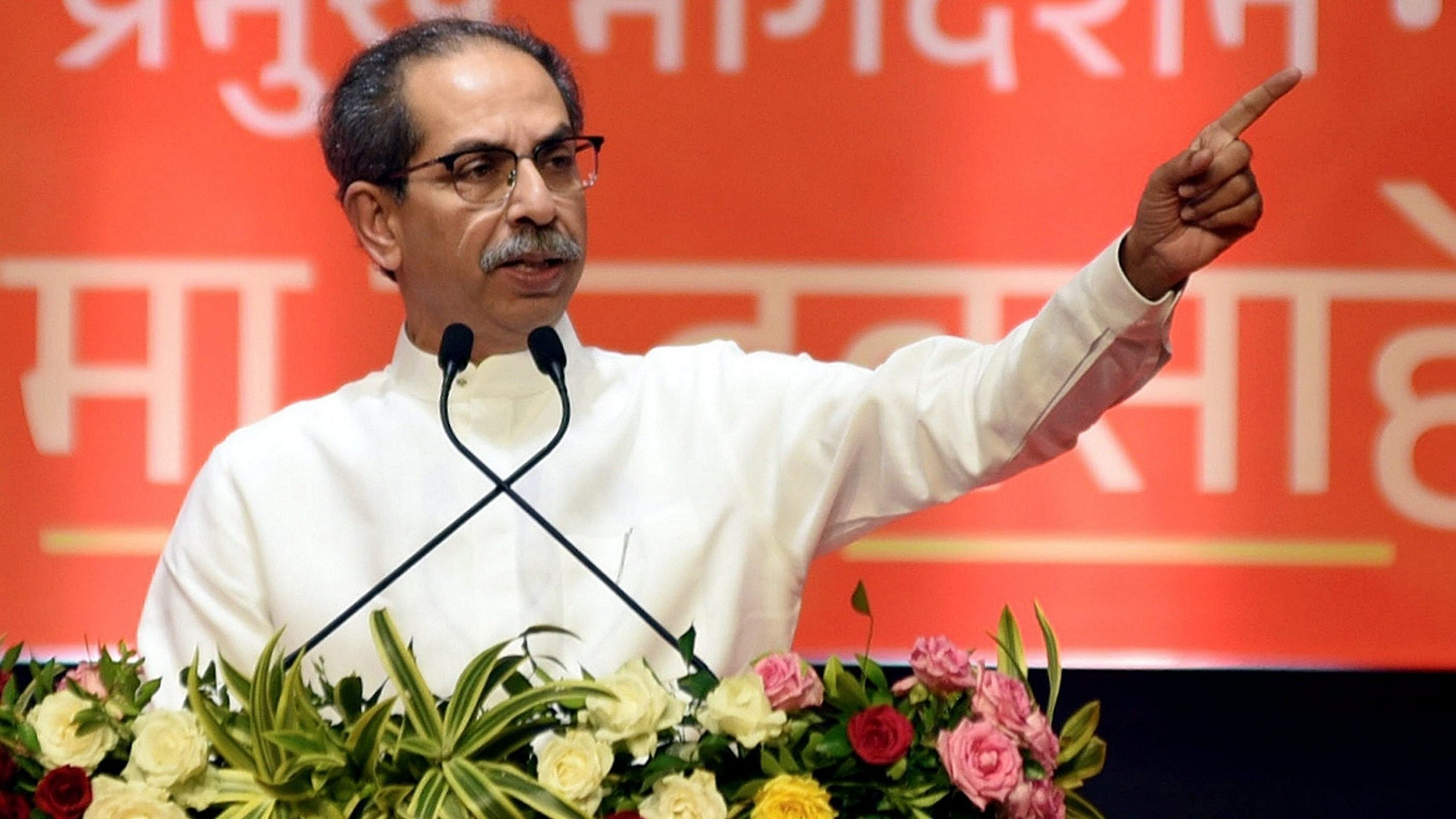
Uddhav Thackeray.
Credit: PTI Photo
Shiv Sena founder Balasaheb Thackeray never felt the need to visit Delhi. Ensconced at his lair ‘Matoshree’, he jogged the levers of power by controlling Mumbai and Maharashtra.
When Thackeray ruled Mumbai, the state polity was neatly divided into two halves. Sena and BJP were on one side, while the other half was controlled by the Congress, initially on its own, and later in alliance with Sharad Pawar who formed his own outfit – National Congress Party – in 1999. Pawar competed and later aligned with Congress brokering a power-sharing formula both in Delhi and Maharashtra.
Narendra Modi’s ascent in national politics in 2014 disrupted this status quo. The BJP, which was content to play second fiddle to its regional partners, sought a dominant role in states too. As a consequence, the Maharashtra alliance with the undivided Shiv Sena based on an un-written code giving a pre-eminent role to the regional party in state politics lay shattered. The BJP riding on a pan-India nationalistic rhetoric attempted to overwhelm Sena’s sub-nationalism and urban-middle-class appeal with a larger Hindu consolidation.
Five months after coming to power with a full majority at the centre in 2014, the BJP emerged as the bigger partner in the alliance in the state assembly elections as well. It installed its first chief minister in Maharashtra – the Nagpur boy Devendra Fadnavis, who was sent to Mantralaya, as part of the then-political template to hoist non-dominant caste leadership in key states.
Pushed to the margins, Sena under Uddhav Thackeray, waited in the wings. It contested the 2019 elections in alliance with the BJP, only to join hands and stitch a post-poll alliance with Sharad Pawar’s NCP and the Congress.
Who would have thought that one day Congress would be a part of a government led by Uddhav Thackeray?
Bruised and battered, the BJP struck back, breaking both Shiv Sena and NCP to install its government. The primary objective was to create an alternative to Sena in the NDA and weaken the NCP-Congress hold over the Maratha votes by weaning away Sharad Pawar’s nephew and man Friday Ajit Pawar. The Maharashtra operation was critical ahead of the 2024 Lok Sabha polls. So much so, that the party was willing to concede the chief ministership of the breakaway faction of the Sena led by Eknath Shinde as Fadnavis had to be content with the deputy CM’s post.
The NDA 2.0 in Maharashtra, faltered at the first test – the 2024 Lok Sabha polls. The biggest loser in the Maha Yuti was the BJP which lost comprehensively to the Congress in Vidarbha and Marathwada.
Buoyed by their performance, the Congress and NCP (SP) are on an upswing in Maharashtra. The two are natural allies, they draw support from the same social group – Maratha, Mahar, and Muslims.
Ideologically, Uddhav Thackeray’s Sena is the odd one out in the MVA. It will become vulnerable in case Congress and NCP together get enough seats to touch the halfway mark. Thus, Sena UBT wants a guarantee of sorts. That explains the party’s persistent demand to declare Udhav Thackeray as the chief ministerial face of the alliance.
Congress and Pawar, however, are in no hurry.
Nana Patole, the president of the Maharashtra Pradesh Congress Committee, said that unseating the Eknath Shinde government in the upcoming assembly polls was more important for Maha Vikas Aghadi than discussing who will be the opposition alliance's chief ministerial face.
Unlike his father, Uddhav travels to Delhi, especially when parliament is in session. In an interaction with journalists at MP Sanjay Raut’s residence during his last trip in August, he was asked to comment on the possibility of Sena-BJP burying the hatchet. Uddhav responded by drawing the distinction between the “new” and the “old” BJP that Sena found more compatible to work with.
A section in the Rashtriya Swayamsewak Sangh RSS and the BJP are well aware of the concerns in the Uddhav camp. It’s a long shot, and political realignments take time.
But then, politics, as they say, is the art of the possible.